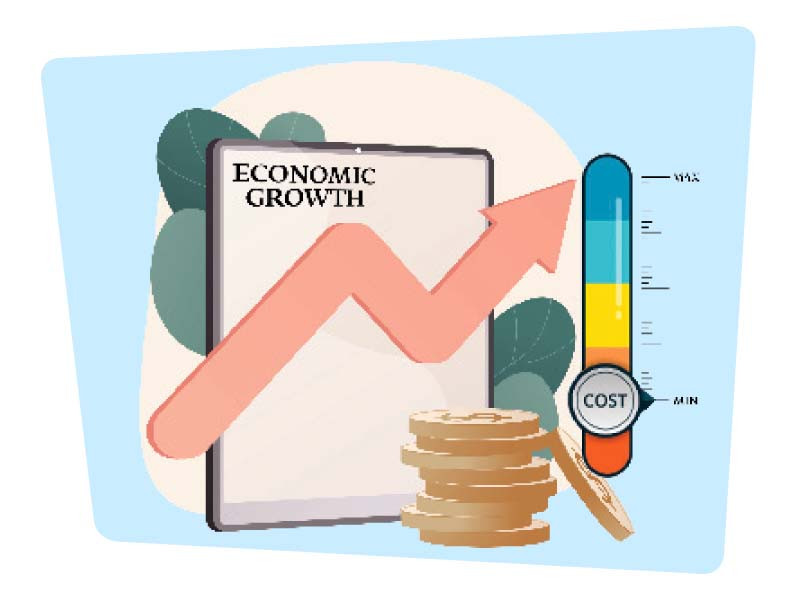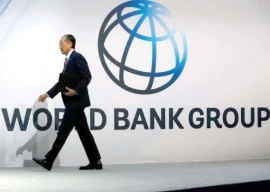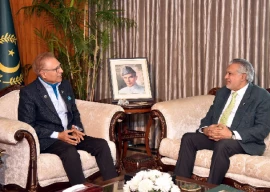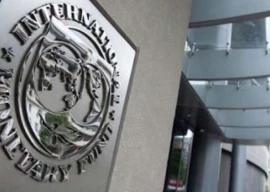
Pakistan needs to implement economic stabilisation policies for a prolonged period to correct critical imbalances threatening its economic viability, leaving no room for the government’s desire to achieve a 4% economic growth rate in the next fiscal year.
Any attempt to spur the sluggish economic growth rate through expansionary fiscal and monetary policies will immediately antagonise the International Monetary Fund (IMF) and regional countries – all of whom now want to see a fiscally responsible Pakistan.
The government, however, will face the challenge of dealing with low economic growth and high inflation – an outcome of politically motivated decisions taken by the successive governments of Imran Khan and Shehbaz Sharif during the past two years.
Due to serious and critical imbalances threatening the country’s economic viability, Pakistan cannot afford to roll out monetary and fiscal policies to achieve over 4% economic growth rate in FY2023-24, starting from July.
Finance Minister Ishaq Dar had announced, in his budget speech, that due to growth in the agriculture, industrial, and information technology (IT) sectors, the Gross Domestic Product (GDP) growth rate will cross over 4% for the next fiscal year.
Prime Minister Shehbaz Sharif has also set up a new task force on the economy to spur the economic growth rate. This will require the implementation of policies in contradiction to what the IMF and the regional countries have been demanding.
The previously projected GDP growth rates of 2% by the IMF and 5% by Pakistan for the current fiscal year have already become unrealistic. The IMF is expected to cut down its growth forecast for this fiscal year even more. Both sides have reached an understanding to reduce expenditure, except on debt servicing, to impose new taxes and increase interest rates.
The country cannot afford to have a large current account deficit (CAD) in the current and next fiscal years, as the large deficits in the past have remained an important source for financing consumption-led economic growth. This accelerated the process of economic destabilisation of Pakistan.
The sources said that the regional countries whose financing was very crucial for the approval of the $1.1 billion loan tranche are also pushing Pakistan to adopt a fiscally prudent path. Their assurances are critical to set a date for the IMF board meeting, even if both sides reach staff level agreement. The IMF will seek assurances directly from the regional countries before setting the board meeting for approval of the loan.
Since Pakistan’s external and fiscal situation remains precarious, the country will have to go back into yet another IMF programme after the expiry of the current $6.5 billion package in June this year. Any deviation from the fiscal and monetary path agreed with the IMF during the 9th review will increase the cost during negotiations for the next loan tranche, and the new bailout package.
Due to these reasons, talks between the government and IMF have predominately remained focused on fiscal and external imbalances.
Unlike the past, this time there was no role of the Planning Commission or Ministry of Commerce in the 9th review talks. The data related to the country’s trade, inflation and economic growth rate was shared by the Ministry of Finance, further strengthening the role of the treasury in such discussions.
There is also a need for tight monetary policies to contain inflation, which has been projected by the Ministry of Finance to stand at 29% for this fiscal year. The IMF is seeking big adjustment in interest rates to curb inflationary pressure, as it believes that delayed action will delay the slowdown of inflation.
Pakistan has committed to follow the real positive interest rate going forward, measured by headline inflation. The IMF has also advised the State Bank of Pakistan (SBP) to remove import restrictions and withdraw guidelines issued to commercial banks about priority in opening Letters of Credit (LCs).
In these challenging times there is a need for quarterly reporting of the GDP growth figures to reveal real economic patterns. Officials from the Pakistan Bureau of Statistics (PBS) met with the IMF team during the talks, and updated the global lender about progress on the quarterly national accounts and electricity related Consumer Price Index (CPI) issues.
The PBS informed the IMF that Pakistan was in the process of developing the quarterly national accounts and that the PBS was also consulting the World Bank on the quarterly GDP methodology.
The PBS data set, however, is not yet complete to regularly issue the quarter economic growth figures. The data on both input and output of some sectors is available, while in some sectors of the production side it either had input or output data – not both - which could cause inaccuracy in growth figures.
The PBS informed the IMF that the overall availability of either both or only input and output data was 84%, which it claimed was fair enough to publish the quarterly GDP estimates.
In response to the question from the IMF, related to the quarterly GDP from expenditure side, PBS said that for the time being they are focusing on the production side and planning to estimate the quarterly GDP from the expenditure side in the coming years.
Published in The Express Tribune, February 18th, 2023.
Like Business on Facebook, follow @TribuneBiz on Twitter to stay informed and join in the conversation.

1732013245-0/now-you-see-me-(1)1732013245-0-405x300.webp)
1730959638-0/trump-(19)1730959638-0-165x106.webp)


















COMMENTS
Comments are moderated and generally will be posted if they are on-topic and not abusive.
For more information, please see our Comments FAQ